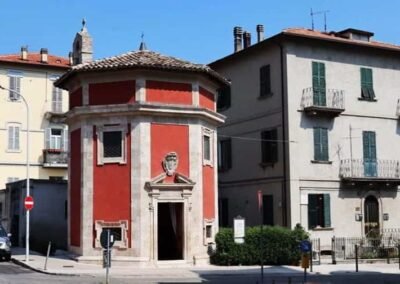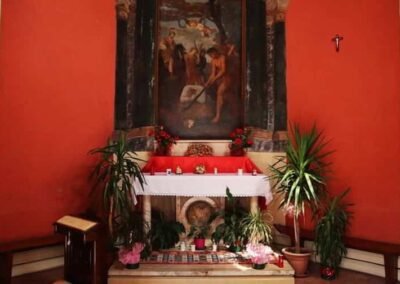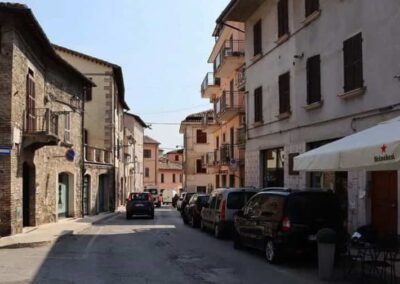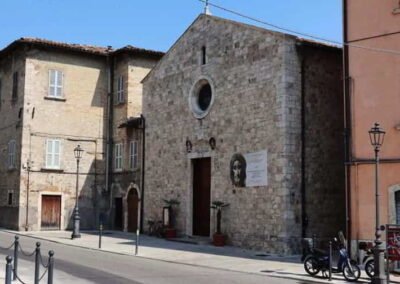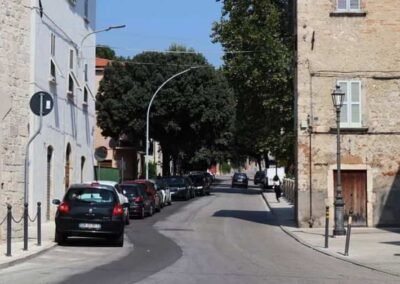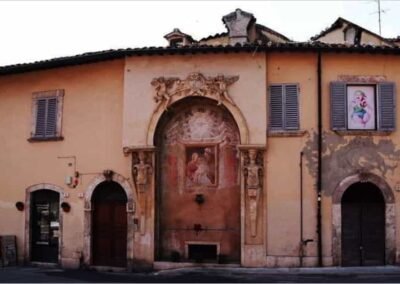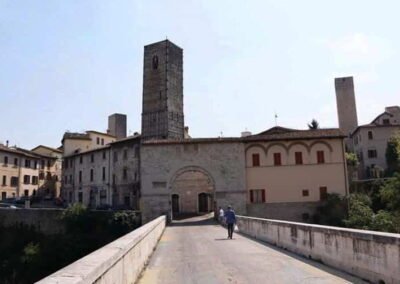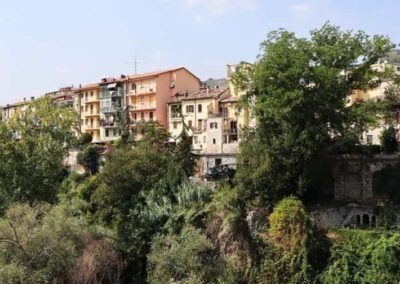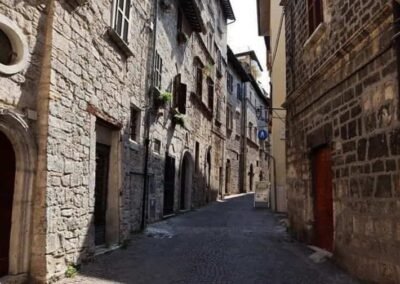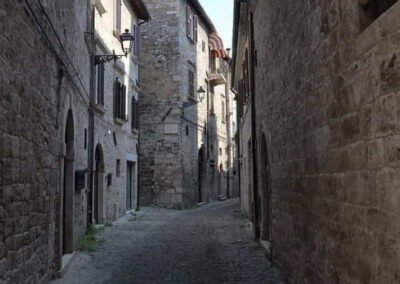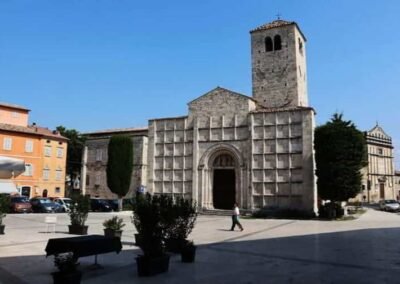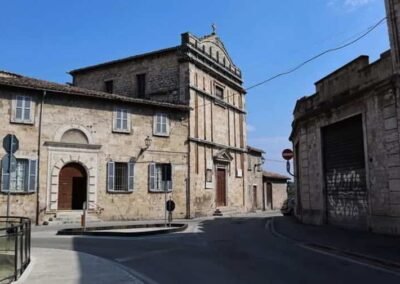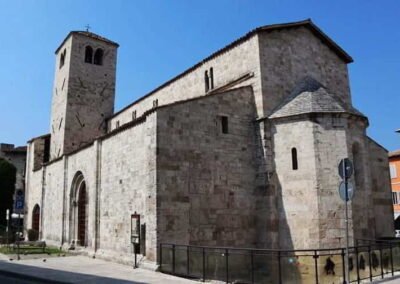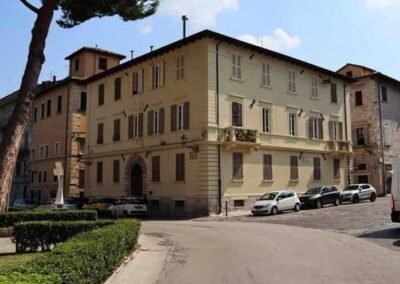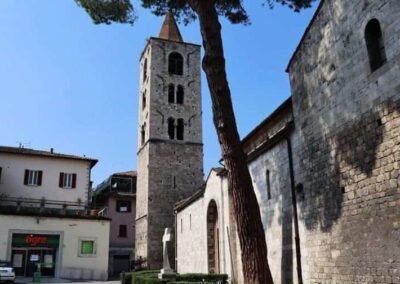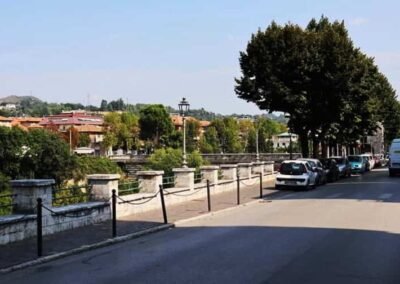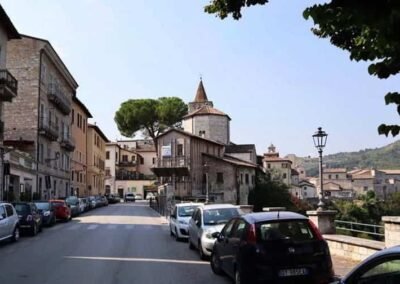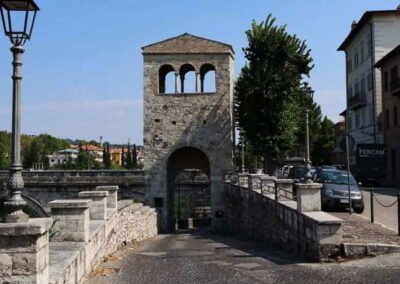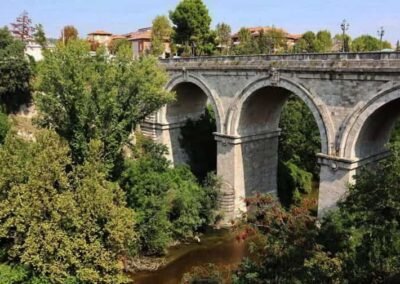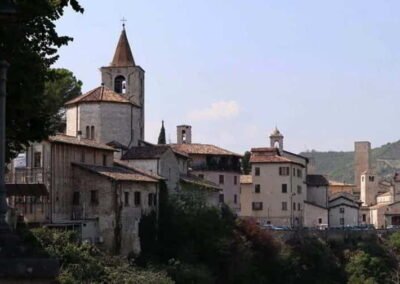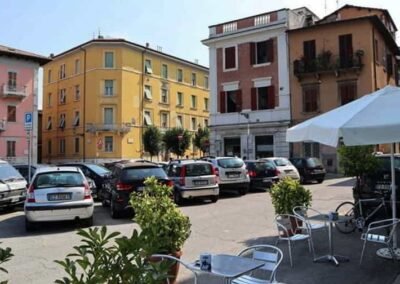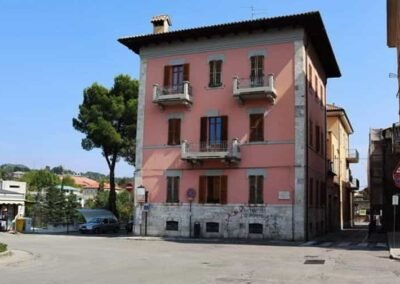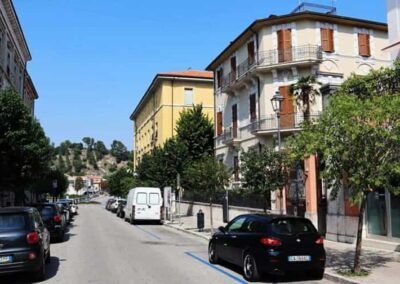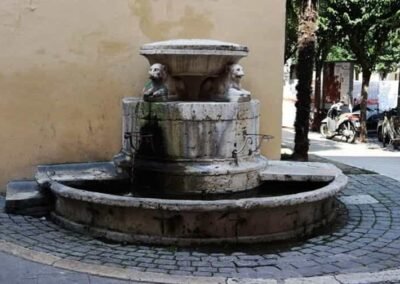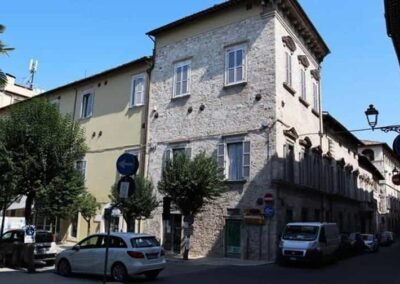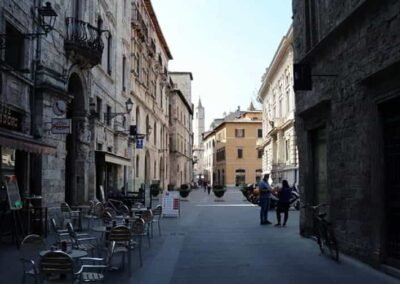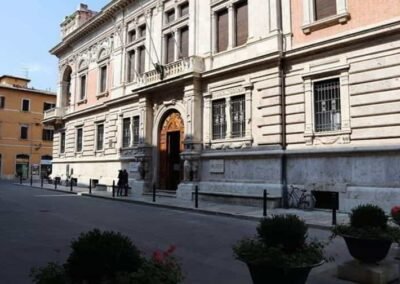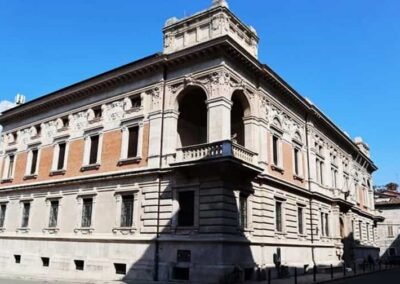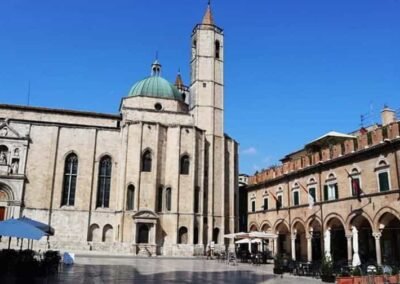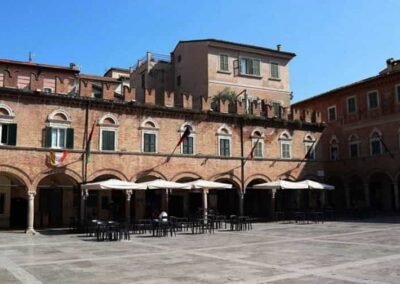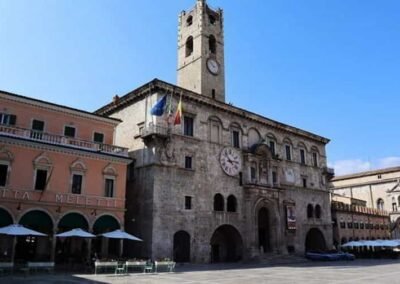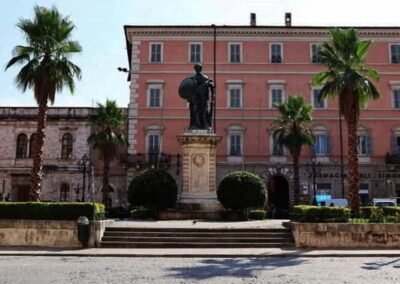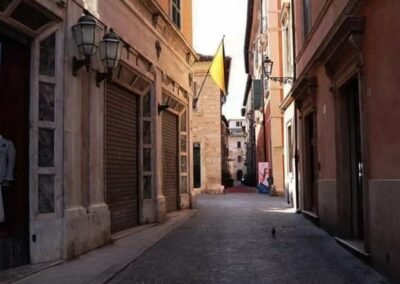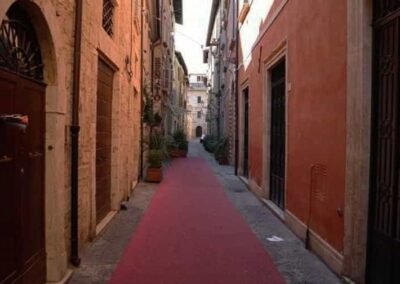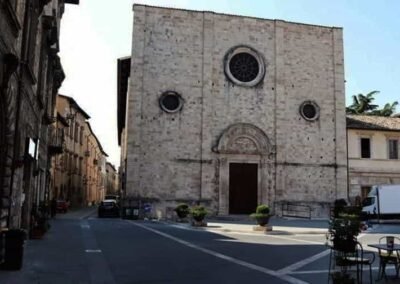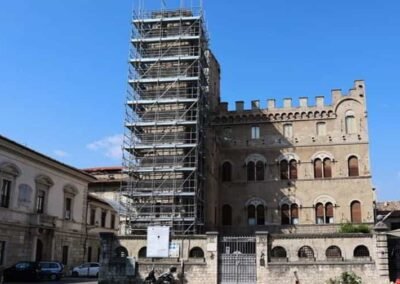HOME
THE REGIONS OF ITALY
PLACES IN ITALY
Italy in Photos
Piazza Giovanni Giacomini, 63100 Ascoli Piceno AP, Italy (September 2020)
Ascoli Piceno
Ascoli Piceno is a charming city located in the southern part of Italy’s Marche region, nestled between the Apennine Mountains and the Adriatic Sea. Known as “the city of travertine,” Ascoli Piceno is celebrated for its elegant architecture built almost entirely from this pale stone, which gives the city an unmistakable golden hue. With a rich history that stretches back to pre-Roman times, the city offers visitors a remarkable blend of ancient heritage, medieval charm, and vibrant modern life.
The heart of Ascoli Piceno is its magnificent Piazza del Popolo, often considered one of the most beautiful squares in Italy. This elegant plaza, surrounded by Renaissance arcades and historic buildings, serves as a gathering place for locals and visitors alike. Dominating the square is the Palazzo dei Capitani del Popolo, a stately 13th-century palace that once housed the city’s government and still stands as a symbol of civic pride. Nearby, the Church of San Francesco adds a touch of Gothic grandeur, with its impressive façade and peaceful cloisters.
Beyond its main square, Ascoli Piceno is a maze of narrow streets, stone towers, and hidden courtyards that invite exploration. The city’s historic centre retains its medieval structure, offering a glimpse into centuries of architectural evolution. Every corner reveals a piece of history, from Roman bridges that still span the Tronto River to quiet churches filled with artistic treasures. One of the most remarkable examples of Roman engineering is the Ponte di Cecco, said to have been built by the devil himself according to local legend.
Culturally, Ascoli Piceno is deeply rooted in tradition. The city is famous for the Quintana, a spectacular medieval jousting tournament held twice a year in July and August. During this festival, the streets come alive with processions, music, and colourful costumes, transporting visitors back to the 15th century. Another symbol of local pride is the “olive all’ascolana,” a delicious specialty of stuffed and fried olives that has become a beloved Italian delicacy.
Surrounded by rolling hills, vineyards, and national parks, Ascoli Piceno also offers easy access to natural beauty. Whether enjoying a leisurely walk along the riverbanks, hiking in the nearby Sibillini Mountains, or visiting the Adriatic coast, visitors find countless opportunities to experience the region’s diverse landscapes. Combining history, art, gastronomy, and nature, Ascoli Piceno stands as one of Italy’s most enchanting and authentic destinations.
Worth a Visit
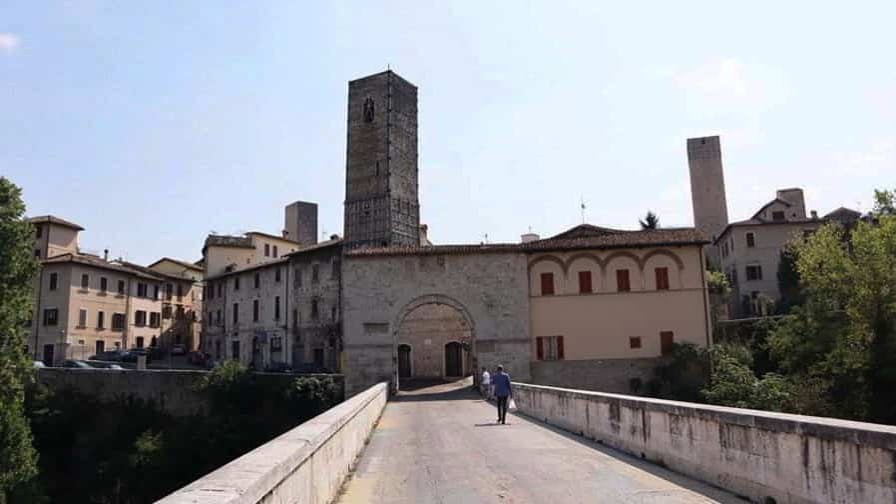
The Ponte Romano, or Roman Bridge, in Ascoli Piceno is one of the city’s most remarkable ancient landmarks and a striking testament to Roman engineering. Spanning the Tronto River, the bridge has stood for more than two thousand years, connecting the historic heart of Ascoli with the surrounding countryside. Built from the city’s characteristic travertine stone, it combines strength and elegance in its design, with graceful arches that have endured centuries of floods and use. According to local legend, the bridge was built by a craftsman named Cecco d’Ascoli with the help of the devil himself, giving it the nickname “Ponte di Cecco.” Despite the myth, its true origins reflect the exceptional skill of Roman architects who created lasting infrastructure across the empire. Today, the Ponte Romano remains a beautiful and evocative reminder of Ascoli Piceno’s long and fascinating past.
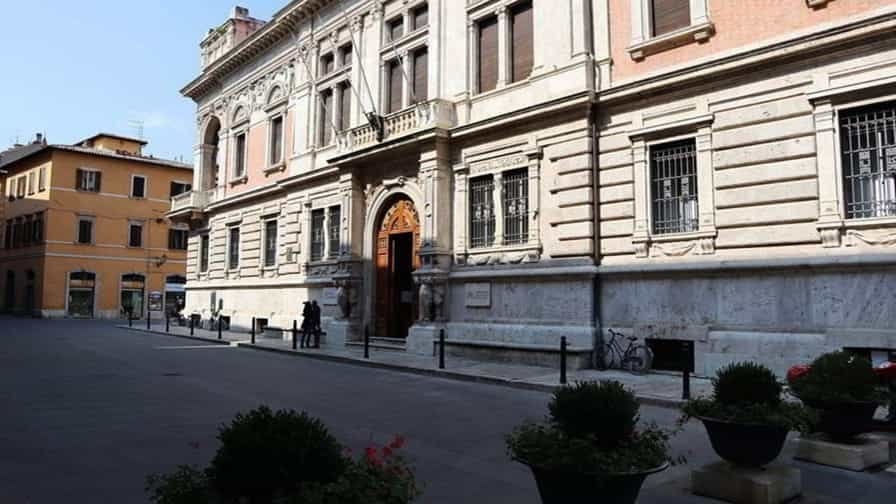
The Corso Giuseppe Mazzini in Ascoli Piceno is one of the city’s most emblematic boulevards, an elegant artery that runs through the heart of the medieval and Renaissance centre. Steeped in history dating back to Roman times and lined with architectural treasures from multiple eras, the Corso offers a vivid introduction to Ascoli Piceno’s rich cultural identity. Beginning as a principal Roman decumanus (east–west main street), Corso Mazzini was unearthed during archaeological excavations in 2013. These revealed multiple strata beneath the modern surface—including Roman paving stones with chariot wheel grooves, trodden for centuries, and even deeper, earlier roadbeds and walls in opus quasi reticulatum construction.
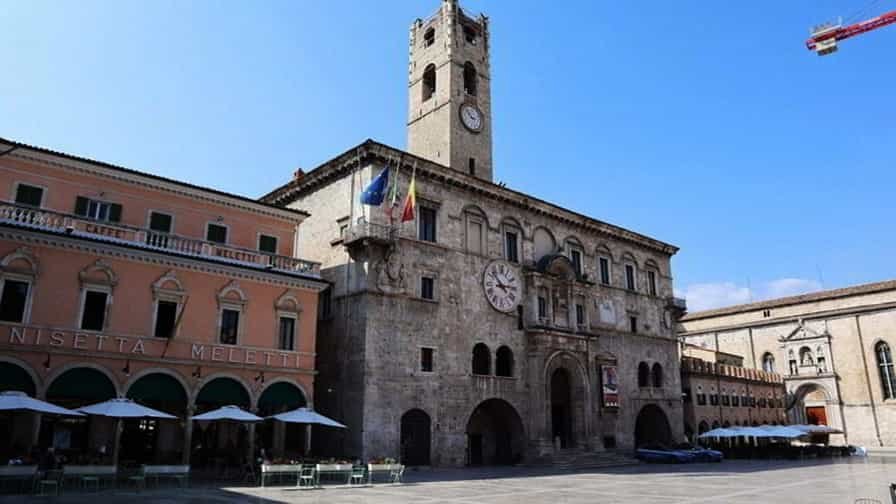
Piazza del Popolo in Ascoli Piceno is one of Italy’s most captivating public squares, renowned for its perfect harmony, elegance, and timeless beauty. Surrounded by graceful Renaissance arcades and historic buildings, the square serves as the vibrant heart of the city, where residents and visitors gather to enjoy its lively atmosphere. The entire piazza is paved with smooth travertine stone, giving it a warm, luminous tone that changes with the light of the day. Dominating the square is the majestic Palazzo dei Capitani del Popolo, a 13th-century palace that once housed the city’s rulers. Nearby stands the Church of San Francesco, whose Gothic façade adds depth and contrast to the square’s architectural unity. Cafés line the edges of the piazza, inviting people to sit and admire the view while sipping a coffee. Elegant and full of life, Piazza del Popolo truly embodies the spirit and charm of Ascoli Piceno.
Photo Gallery of Walk 1 – Via Bengasi to Lungo Tronto Bartolomei
Approximately 0.90 km – 0.56 miles
The walk starts in Via Bengasi – Tempietto di Sant’Emidio Rosso, Via Berardo Tucci – Via Berardo Tucci – Via Rigante Adriano – Ponte Romano – Via di Solestà – Via Delle Donne – Piazza Ventidio Basso – Via E Tamburini – Piazza Santa Maria Inter Vinea – Lungo Tronto Emidio Bartolomei – Lungo Tronto Bartolomei – Piazza Giovanni Giacomini – Via Giuseppe Sacconi – Corso Giuseppe Mazzini – Piazza del Popolo – Via Panichi Alessandro – Piazza Roma – Via del Crocifisso – Via Antonio Orsini – Corso Giuseppe Mazzini – Piazza Sant’Agostino
COPYRIGHT © 2018-2025 ITALY IN PHOTOS - ALL RIGHTS RESERVED
